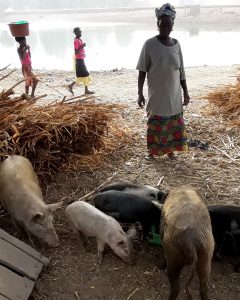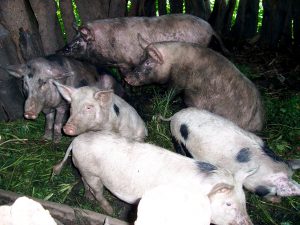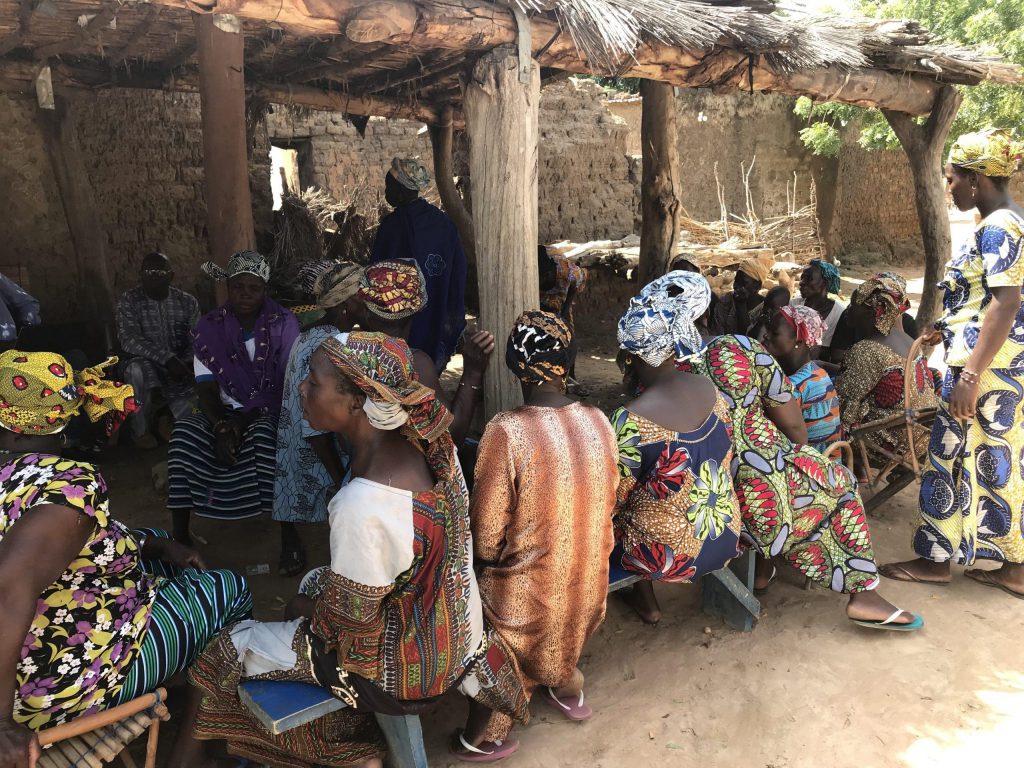
Increasing Pig Farming Profitability with Cassava Residue
Jan. 25 | 2020
Last September volunteer, Professor Harouna Maiga of the University of Minnesota, Crookston campus, visited Mali to meet with local agriculture agents to better understand the practices of pig farmers in Sienso and Somo in the region of Segou. Maiga’s goal of the trip was to improve the profitability of pigs by using cassava leaf and stem as silage.
Maiga learned the pigs were enclosed in a brick enclosure with an outside feeding area during the rainy season with 2-3 sows with an average of 3-5 piglets each. During the dry season the pigs scavenge freely through home waste and crop residue. Although the feed quantity is hard to estimate, the pigs’ diets consist primarily of leftover alcohol processing such as wet grains and soluble, bran from millet and sorghum processing, pasture grazing, harvested wild braid leaf plants and kitchen leftovers.
It is estimated that each (local breed) pig will consume 3-4 kg (about 8.1 lbs) each day with levels of crude protein at 20-23% in pre-starters and 18-20% in starters when available. Currently the local production systems and the low nutrient content of scavenged feed make it difficult to achieve this ideal. In order to increase the profitability of a pig, the waste material of cassava production can be utilized.
“I do not know that one can kill two birds with a stone: feeding animal with cassava and then getting more good manure for fields,” said Amadou Coulibaly, a cassava grower, during the assessment meeting in Tafila.
Manure is an added benefit to the grow process as West Africa is considered one of the top regions in the world for cassava production and consumption providing a ready supply of residue. The plant is drought tolerant providing feed for the pigs during the dry season, creating a mutualistic relationship between pig and plant due to the new training farmers received.
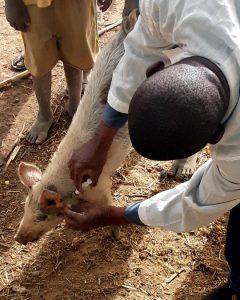 |
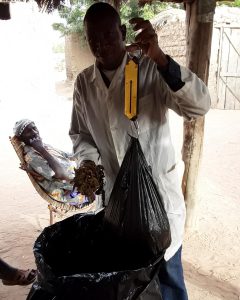 |
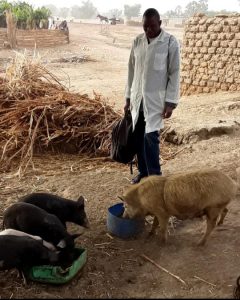 |
The natural cyanide content of the fresh cassava plant is toxic for both humans and animals. Fermentation eliminates cyanide and makes it a safe supplemental feed source for pigs and livestock. The process Maiga used during his training at Sienso is as follows:
- Cutting stems 30 cm (12 in) above the ground, the tops of cassava are harvested and left to wilt for six hours.
- The green material is chopped to about 1.27 cm (0.5 in) in length and using a mortar to break the stems.
- The material is then packed right in a polyethylene plastic bag (1.20 m x 0.80 m) to remove the air. The bag is then closed using dah fiber cotton or nylon cords.
- The bagged material is left for 30 days to ferment. After this time the silage that is fermented properly should appear brown, with a pleasant odor.
After the visit student interns from the University of Segou collaborating VALID project will assist farmers in Sienso and Somo. Sponsored by the Browse and Grass Growers Coop, they will work on the cassava silage process and collect data for future diet recommendations. Overall, the farmers said they appreciated the training and are now committed to the new silage. They thank Winrock for the training!

